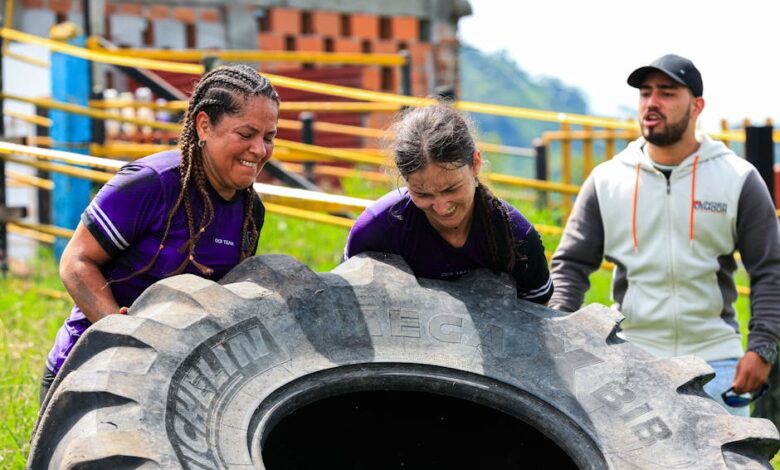Laying the Groundwork: The ObjectMapper’s Core Strength

We’ve all been there. Faced with the task of converting raw data—perhaps a messy array from an API or a form submission—into a neat, type-safe PHP object, our minds often gravitate towards the quickest solution. For many Symfony developers, the symfony/object-mapper component might initially seem like just that: a convenient shortcut, a simple hydrator to turn an array into a DTO. A humble tool, nothing more.
I distinctly remember approaching it with that very mindset. But as I peeled back its layers, I discovered something far more profound. This “simple hydrator” isn’t just a basic utility; it’s a remarkably powerful, configurable facade built on top of Symfony’s robust Serializer component. It’s an unsung hero capable of solving genuinely complex data transformation challenges with surprisingly elegant and maintainable code.
Today, I want to move beyond the superficial. I’ll share how I transformed my perception of ObjectMapper and started using it as a full-fledged data mapping framework. We’ll dive into non-trivial use cases, backed by a Symfony 7.3 perspective, and unlock its true potential.
Laying the Groundwork: The ObjectMapper’s Core Strength
Before we venture into the advanced, let’s ensure our foundation is solid. In a modern Symfony application leveraging Flex, the essential components are likely already in place. You’ll primarily need symfony/object-mapper, complemented by symfony/property-access and symfony/property-info. These three form the backbone of its intelligent operations.
One of Symfony’s true beauties is its autoconfiguration. Wiring up the ObjectMapper becomes a zero-effort task. As long as your config/services.yaml is set up for autowiring (which it is by default), you can simply inject ObjectMapperInterface into any service or controller, and you’re good to go.
# config/services.yaml
services: _defaults: autowire: true autoconfigure: true App\: resource: '../src/' # ... standard exclude block
The core function you’ll interact with is map(mixed $source, string|object $destination). In its most basic form, it’s delightfully straightforward:
// Basic Example
$data = ['name' => 'Acme Corp', 'yearFounded' => 2025];
$companyDto = $this->objectMapper->map($data, CompanyDto::class);
This is where most developers stop. But this is just the tip of the iceberg. The real power comes when you demand more from your data structures.
Crafting Modern Data Structures: Immutability and Recursive Mapping
Modern PHP best practices, particularly with the advent of PHP 8.1’s readonly properties and PHP 8.2’s `true` type, lean heavily towards immutability. Objects with properties initialized exclusively through a constructor are less prone to bugs and easier to reason about. But how does a mapper, traditionally reliant on setters, work with objects that have no setters?
Embracing Immutable DTOs with Constructor Promotion
This is where ObjectMapper shines. It cleverly leverages the PropertyInfo component to inspect your class’s constructor. It then intelligently matches keys from your source data to the constructor’s parameter names and types, making it perfectly compatible with constructor property promotion.
Imagine you have incoming user data as an array:
$userData = [ 'id' => 123, 'email' => 'contact@example.com', 'isActive' => true,
];
And your target DTO is fully immutable, a common pattern in robust applications:
// src/Dto/UserDto.php
namespace App\Dto; final readonly class UserDto
{ public function __construct( public int $id, public string $email, public bool $isActive, ) {}
}
The mapping logic remains beautifully simple:
use App\Dto\UserDto;
use Symfony\Component\ObjectMapper\ObjectMapperInterface; // In a service/controller...
public function __construct( private readonly ObjectMapperInterface $objectMapper
) {} public function handleRequest(): void
{ $userData = [ /* ... array data ... */ ]; // The ObjectMapper calls the constructor with the correct arguments. $userDto = $this->objectMapper->map($userData, UserDto::class); // $userDto is now a fully populated, immutable object. No setters needed! // assert($userDto->id === 123);
}
No special configuration, no complex factory methods. It just works, respecting the immutability you’ve designed into your DTOs. This felt like magic the first time I saw it in action.
Navigating Complexities: Nested Objects and Collections
Let’s be real: data structures in the wild are rarely flat. An API response for a user profile will likely include a nested address object, and an array of recent posts. This is where ObjectMapper truly begins to act like a framework, handling recursion with remarkable ease.
The mapper uses PHP type hints and PHPDoc annotations (like @param PostDto[]) to understand the intricate structure of your target objects. When it encounters a property typed as another class, it doesn’t just pass the raw array along; it recursively calls map() on that specific part of the data, building out your entire object graph.
Consider this slightly more complex payload:
$payload = [ 'userId' => 42, 'username' => 'symfonylead', 'shippingAddress' => [ 'street' => '123 Symfony Ave', 'city' => 'Paris', ], 'posts' => [ ['postId' => 101, 'title' => 'Mastering ObjectMapper'], ['postId' => 102, 'title' => 'Advanced Normalizers'], ],
];
We define a DTO for each distinct structure, noting the crucial PHPDoc on the $posts property which guides the mapper:
// src/Dto/UserProfileDto.php
namespace App\Dto; final readonly class UserProfileDto
{ /** * @param PostDto[] $posts */ public function __construct( public int $userId, public string $username, public AddressDto $shippingAddress, public array $posts, // Note: array of PostDto objects ) {}
} // src/Dto/AddressDto.php
namespace App\Dto;
final readonly class AddressDto
{ public function __construct(public string $street, public string $city) {}
} // src/Dto/PostDto.php
namespace App\Dto;
final readonly class PostDto
{ public function __construct(public int $postId, public string $title) {}
}
Once again, the mapping call remains unchanged. The mapper gracefully handles the entire tree, building out nested DTOs and collections as if it were explicitly told to:
use App\Dto\UserProfileDto; // ... $userProfile = $this->objectMapper->map($payload, UserProfileDto::class); // assert($userProfile->shippingAddress instanceof \App\Dto\AddressDto);
// assert($userProfile->posts[0] instanceof \App\Dto\PostDto);
// assert($userProfile->posts[0]->title === 'Mastering ObjectMapper');
This recursive capability is a game-changer, eliminating reams of manual data hydration code that would otherwise clutter your application.
Fine-Tuning Transformations: Custom Logic and Naming Conventions
What happens when the source data type doesn’t directly match your target? Say, mapping an ISO 8601 date string like “2025–10–18T18:15:00+04:00” to a \DateTimeImmutable object? This is where the ObjectMapper‘s integration with the underlying Serializer component really shines.
When Data Doesn’t Fit: Custom Normalizers
You solve this by creating a custom normalizer. A normalizer is essentially a class that teaches the Serializer (and by extension, the ObjectMapper) how to convert a specific type to and from a simple array or scalar format. It’s like giving your mapper a special dictionary for tricky words.
Let’s create one for \DateTimeImmutable:
// src/Serializer/DateTimeImmutableNormalizer.php
namespace App\Serializer; use Symfony\Component\Serializer\Normalizer\DenormalizerInterface;
use Symfony\Component\Serializer\Normalizer\NormalizerInterface; final class DateTimeImmutableNormalizer implements NormalizerInterface, DenormalizerInterface
{ public function denormalize(mixed $data, string $type, string $format = null, array $context = []): \DateTimeImmutable { return new \DateTimeImmutable($data); } public function supportsDenormalization(mixed $data, string $type, string $format = null, array $context = []): bool { return is_string($data) && $type === \DateTimeImmutable::class; } // ... normalize methods omitted for brevity, but would be present for object -> array public function normalize(mixed $object, string $format = null, array $context = []): string { return $object->format(\DateTimeInterface::RFC3339); } public function supportsNormalization(mixed $data, string $format = null, array $context = []): bool { return $data instanceof \DateTimeImmutable; } public function getSupportedTypes(?string $format): array { return [\DateTimeImmutable::class => true]; }
}
Because our services.yaml is configured for autoconfiguration, this normalizer is automatically tagged with serializer.normalizer and enabled. Now, when the ObjectMapper encounters a property typed as \DateTimeImmutable, it intelligently invokes our normalizer to perform the conversion. It’s a beautifully decoupled way to handle custom data types.
Bridging the Naming Gap: CamelCase to Snake_Case
Here’s a classic development headache: your backend API provides data in snake_case (e.g., user_id), but your PHP codebase proudly follows the PSR standard of camelCase (e.g., userId). Manually mapping these differences is not just tedious; it’s a prime source of bugs and frustration.
Thankfully, the Serializer component, and thus ObjectMapper, has a built-in name converter for this exact scenario. You just need to enable it with a single line of YAML:
# config/packages/framework.yaml
framework: # ... other framework config serializer: name_converter: 'serializer.name_converter.camel_case_to_snake_case'
With this, the ObjectMapper can seamlessly bridge the convention gap. Imagine receiving data like this:
$data = [ 'user_id' => 99, 'first_name' => 'Jane', 'last_name' => 'Doe', 'registration_date' => '2025-10-18T18:15:00+04:00', // Works with our DateTimeImmutable normalizer!
];
And your DTO looks clean and PSR-compliant:
// src/Dto/ApiUserDto.php
namespace App\Dto; final readonly class ApiUserDto
{ public function __construct( public int $userId, public string $firstName, public string $lastName, public \DateTimeImmutable $registrationDate, ) {}
}
The mapping logic remains unchanged, as the name converter and our custom normalizer work in perfect harmony:
use App\Dto\ApiUserDto; // ... $apiUser = $this->objectMapper->map($data, ApiUserDto::class); // assert($apiUser->userId === 99);
// assert($apiUser->registrationDate instanceof \DateTimeImmutable);
This synergy is where ObjectMapper transcends being a “simple tool” and truly becomes a powerful framework, reducing vast amounts of boilerplate and potential errors.
Fortifying the Framework: Validation and Versioning
A data mapping framework isn’t complete without robust error handling and a strategy for evolving data structures. When using Symfony’s ObjectMapper, mapping errors and unserializable types can lead to unstable applications. Integrating the Symfony Validator component is your safety net.
Robustness with Symfony Validator
By applying validation constraints directly to your DTO properties, you ensure that every mapped instance is checked for correctness and data integrity right at the point of creation. This allows you to catch data issues early and provide clear, actionable feedback.
use Symfony\Component\Validator\Validator\ValidatorInterface;
use Symfony\Component\Validator\Constraints as Assert; class UserDtoV1
{ #[Assert\NotBlank] #[Assert\Email] public string $email; #[Assert\NotBlank] #[Assert\Length(min: 3)] public string $name;
} // After mapping raw data to a DTO...
$userDto = $objectMapper->map($rawData, UserDtoV1::class);
$violations = $validator->validate($userDto); if (count($violations) > 0) { foreach ($violations as $violation) { // Log, throw exception, or respond with user-friendly error messages echo $violation->getPropertyPath().': '.$violation->getMessage() . "\n"; } // Respond or log errors accordingly
}
This ensures that mapping failures and incorrect data do not go unnoticed or silently break your logic — every DTO’s content is strictly validated. It’s an essential layer of defense for any application consuming external data.
Future-Proofing with DTO Versioning
As your system grows, maintaining compatibility and data quality across different DTO versions becomes paramount. You’ll often find yourself needing to support older API versions while developing new ones. Using namespaced DTO versions, each with its own validation rules, is an elegant solution to ensure long-term reliability:
namespace App\Dto\V1;
use Symfony\Component\Validator\Constraints as Assert; class UserDtoV1
{ #[Assert\NotBlank] public string $email;
} namespace App\Dto\V2;
use Symfony\Component\Validator\Constraints as Assert; class UserDtoV2
{ #[Assert\NotBlank] #[Assert\Email] // V2 requires email to be a valid format public string $email; #[Assert\NotBlank] #[Assert\Length(min: 3)] public string $fullName; // V2 adds a new required field
}
Each controller or API endpoint can then validate and handle the corresponding DTO version, guaranteeing future changes won’t inadvertently affect existing clients or break validation. Pairing this with a clear strategy for DTO and mapper versioning ensures your application remains maintainable and robust as requirements evolve.
Conclusion
The journey from viewing ObjectMapper as a ‘simple hydrator’ to understanding its role as a sophisticated data mapping framework was a significant one for me. It’s far more than a convenience; it’s a thoughtfully designed, developer-friendly entry point to Symfony’s immensely powerful Serializer component.
By leveraging its underlying mechanics—its ability to handle modern, immutable objects, recursively map complex nested data, integrate custom value objects via normalizers, and gracefully bridge API naming quirks with name converters—you can build incredibly clean, declarative, and robust data transformation pipelines without drowning in boilerplate mapping code. Adding the Validator component and a smart versioning strategy elevates it further, ensuring data integrity and long-term maintainability.
So, the next time you face a complex data hydration task, remember that ObjectMapper is likely the most powerful tool for the job, quietly waiting to simplify your code and make your applications more robust. It truly felt like unlocking a hidden superpower in Symfony. 🚀
I’d love to hear your thoughts in the comments! What are your favorite ObjectMapper tricks, or the biggest data mapping challenges you’ve tackled?
Stay tuned — and let’s keep the conversation going.





